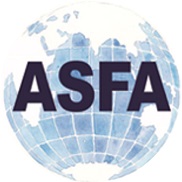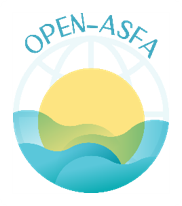Etude de la croissance et de la structure de la faune associée de l’algue rouge Gracilaria gracilis cultivée dans la lagune de Bizerte (Tunisie)
DOI:
https://doi.org/10.71754/instm.bulletin.v47.417Keywords:
croissance, Fauna, Growth rate, Structures, Biochemical composition, Biomass, Marine, Gracilaria gracilis, Lac de Bizerte, Mediterranean SeaAbstract
An important fauna associated with the red algae Gracilaria gracilis grown in the Bizerte lagoon has been observed. This work represents the first study of algae-associated wildlife in this lagoon, which aims to study the structure and interaction of this fauna based on its biomass and biochemical composition, in order to establish a strategy for its harvest in the future. The daily growth rate (DGR) is 5.60 ± 0.94% j-1; 3.29 ± 0.70 and 2.55 ± 0.16% j-1 for the months of April, May and June respectively and an average throughout the period of 3.05 ± 0.78%j-1. The amount of soluble sugar is 35.42 ±11.85% j-1; 48.86 ± 9.16% and 34.12 ± 8.74% for the months of April, May and June respectively and an average throughout the period of 39.47 ± 9.92%. The amount of protein is 21.96 ± 5.15; 18.56 ± 1.90% and 21.90 ± 1.74% for the months of April, May and June respectively and an average throughout the period of 20.81 ± 2.93%. In total, we found six zoological groups that are amphipod crustaceans, isopod crustaceans, molluscs, cnidarians, polychaete annelids and echinoderms. The dominant classes are amphipods and isopods, of which the species Idotea balthica is the most dominant during the growing period. The abundance of isopod (Idotea balthica) is positively correlated with the various responses studied (DGR, agar, proteins and R-phycoerythrin). In conclusion, for a sustainable exploitation of the cultivation of G. gracilis, based on the adequacy between DGR, biochemical composition and associated fauna (number of individuals and species types), we propose to start G.gracilis culture in later March and the harvest, according to a certain strategy, at the end of May.












